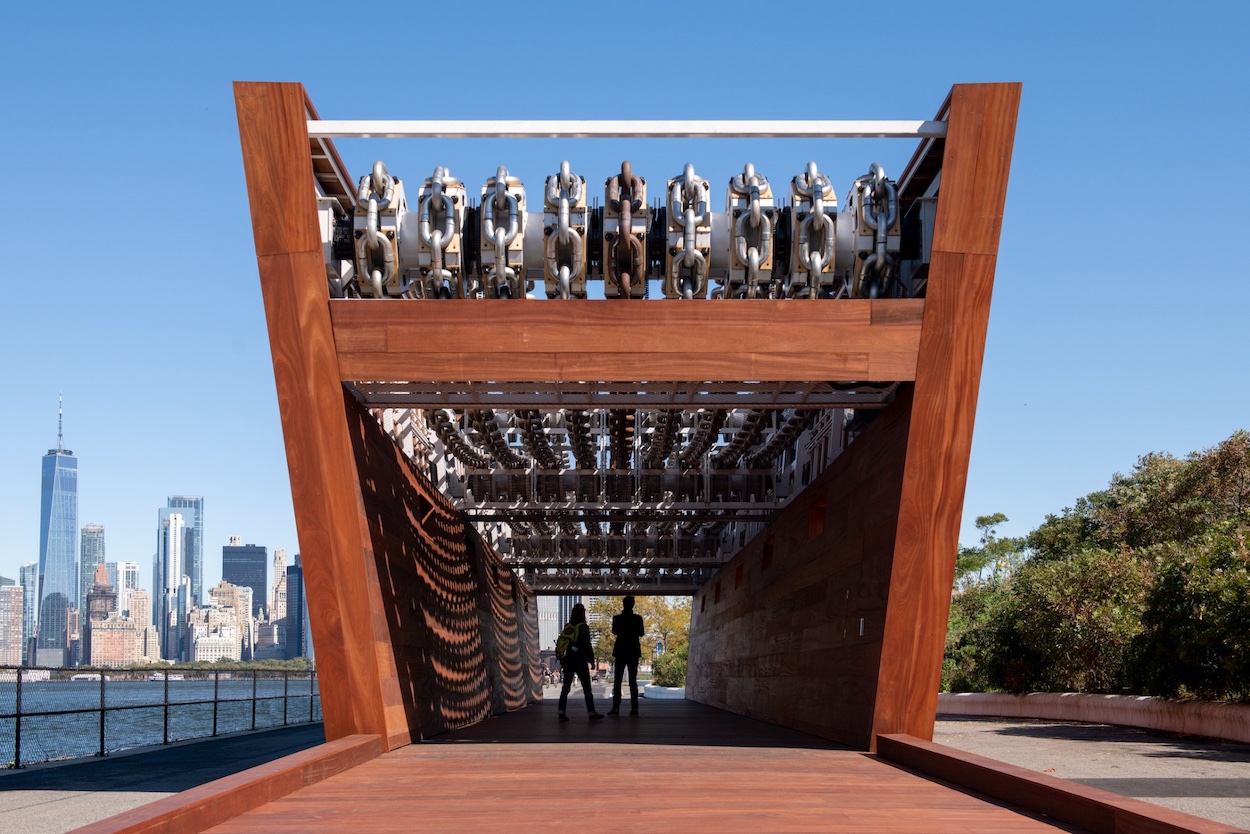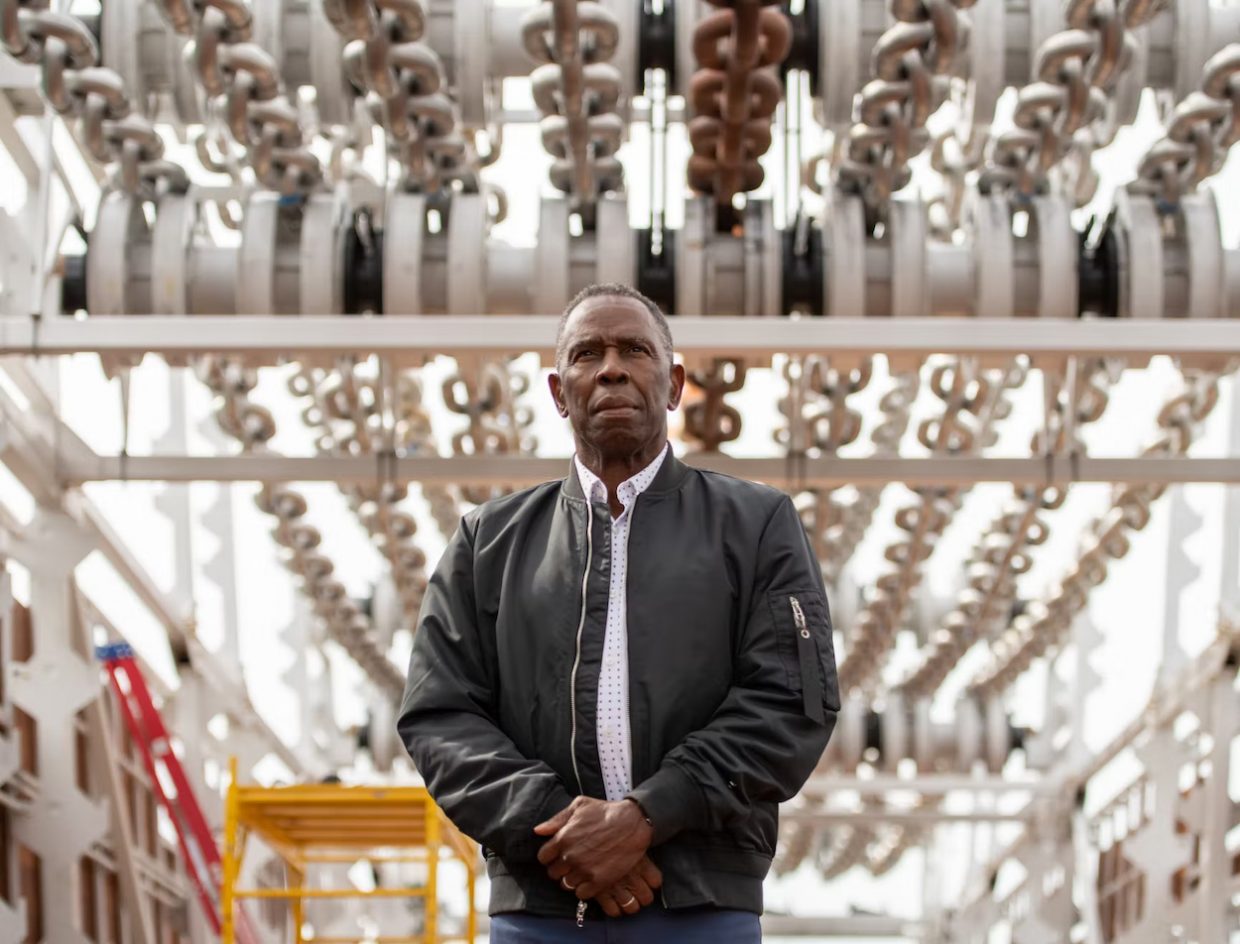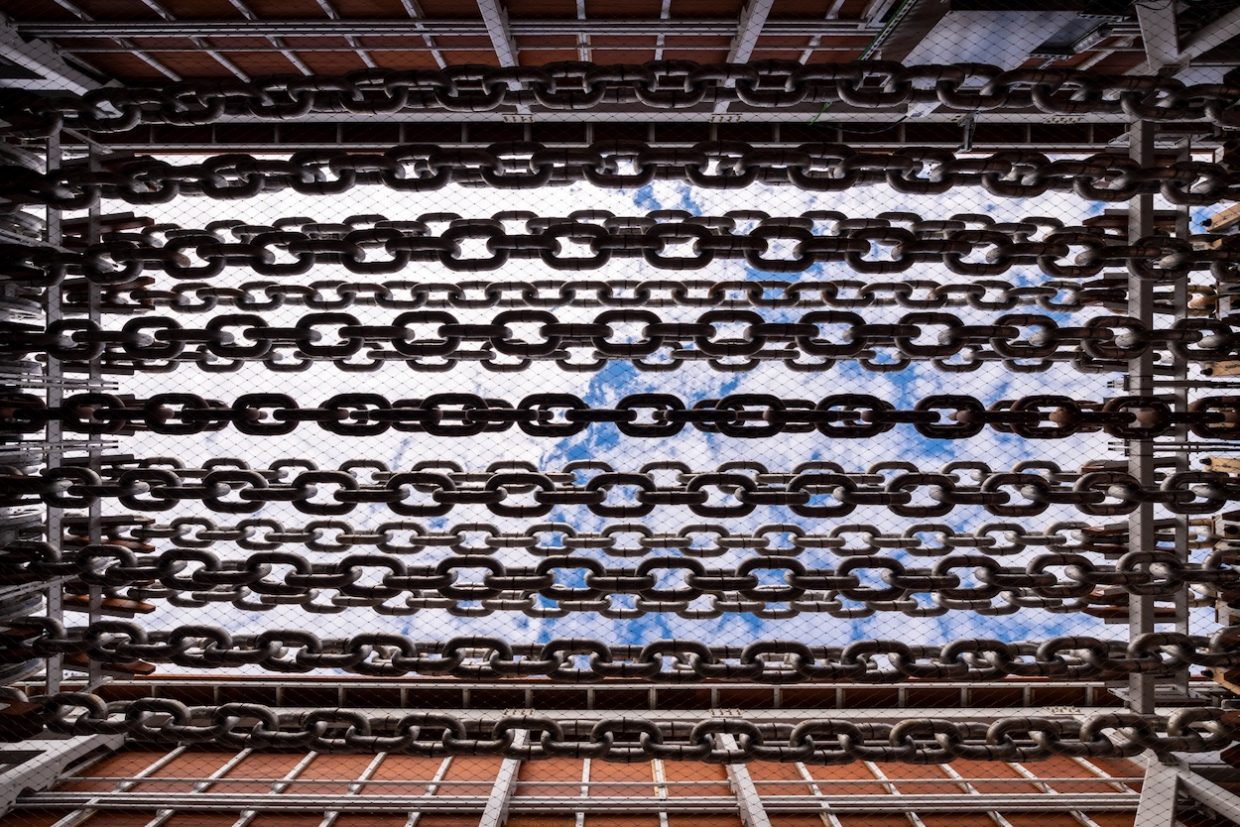Perched on the edge of New York’s Governors Island beneath Outlook Hill is a monolithic wooden structure that slightly resembles the hull of a ship. Look closer, and you may see passersby wandering inside, captivated and overwhelmed by rows of giant steel chains rumbling overhead. Yes, it’s a slave ship. The work is the second part of California artist Charles Gaines’ The American Manifest, the 78-year-old’s inaugural public art project that critiques America’s racist track record. “It shows the history of slavery, Manifest Destiny, colonialism, and imperialism as an interlinking narrative,” he tells Artnet News. “Standing in the middle of it and hearing the sounds exist in time is pretty emotional.”
The 100-foot-long structure’s interior—clad in Sapele, a sustainably harvested wood also known as African Mahogany—replicates the feeling of being trapped on deck that enslaved Africans endured during the Transatlantic journey to the New World. (Its location overlooking the Statue of Liberty, a global symbol of freedom yet a site that welcomed slave ships, is no coincidence.) Eight rows of colossal motor-operated steel chains continuously churn at 15-minute intervals, matching the pace of New York Harbor’s currents, while the central ninth one moves faster, evoking a barge navigating down a river.
“I hope it encourages a conversation about these issues,” Gaines says. “In this country, there’s a general belief that a work of art is supposed to be an expression of beauty, that art isn’t intended to contribute to the political or social understanding of society—but the two parts are inextricably linked. Art as an aesthetic experience and its purpose.”
The idea of systems—whether deeply entrenched social systems that continue to reinforce racism or mechanical ones that keep chains continuously moving—has long been central to Gaines’s practice. His early work, in the 1970s, deconstructed images of trees into gridded drawings based on letters, numbers, and formulas. (Coveted by collectors, they continue to fetch high prices.) He later transposed texts by the likes of Frederick Douglass and Martin Luther King, Jr., into musical scores by matching individual letters to notes, which are then performed by an ensemble. Selling sheet music set to an excerpt of an 1876 speech by Douglass raised $700,000 for Moving Chains.
Though seemingly simple at the outset, realizing Moving Chains was a Herculean endeavor across an unlikely eight-year time frame. The arts agency Creative Time envisioned the work sitting underneath the Gateway Arch in St. Louis, but funding fell through and progress stalled. The delay afforded Gaines time to expand the project into multiple parts, the first of which, titled Roots, brought upside-down Sweetgum trees and a performance of Manifestos 4: The Dred and Harriet Scott Decision to Times Square. And when Moving Chains wraps up, in June, the sculpture will travel to various sites along the Ohio River, in Cincinnati, where it will join more site-specific works that unpack the legacies of settler colonialism.



